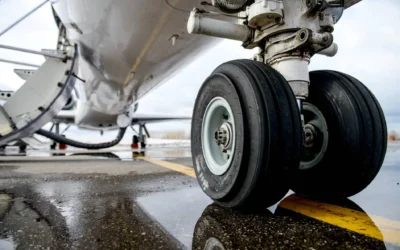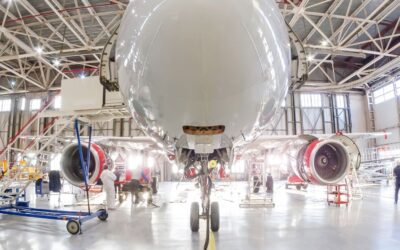Importance of Weather & Aerospace Engineering
Aircraft are operated outdoors, in a wide range of weather conditions. While some weather patterns are too extreme for safe flight, aircraft must still endure quite intense conditions while in flight.
While some types of weather have more significant aviation impacts than others, all environmental conditions can affect flight. Understanding the effects of rain, snow, wind, and ambient temperature on the aircraft is critical to designing, engineering, and manufacturing quality aerospace components that can perform as designed regardless of the forecast.
How Weather Affects Aviation
Rain
While a minor rain shower may not have much effect on flight, heavy rainfall can present some challenges when the aircraft is still on the ground. Taxiing through deep water is different from taxiing on a dry runway, and the aircraft’s tires must be able to maintain adequate grip on the runway surface during takeoff and landing.
Cold Weather
Cold weather can bring snow and ice. Snow and ice buildup on an aircraft can affect the aerodynamics of the aircraft’s crucial structures, such as the tail and wing. This affects drag and lift and can lead to stalling, which can be dangerous. For this reason, preventing snow and ice buildup is critical when flying in cold weather.
Hot Temperatures
The primary risk associated with heat is overheating of vital aircraft components, such as brakes, air systems, and electronic equipment. These malfunctions can be very dangerous. Additionally, extreme heat often reduces ambient air density, which can affect takeoff.
These are just a few examples. Severe thunderstorms and hurricanes, volcanic eruptions, salt air, and countless other weather events and conditions can affect the performance of aerospace components and the aircraft as a whole. All relevant conditions must be considered when designing a component that can withstand them all.
Engineering Aerospace Products to Withstand Weather Conditions
One excellent example of a quality aerospace component designed to withstand intense weather conditions is the motor valve. Motor valves are designed to withstand a wide range of extreme conditions, such as freeze/thaw cycles. Because motor valves are often used in a section of the aircraft without temperature control, these components may encounter a temperature swing from 130°F or higher to -70°F in the span of forty-five minutes, as the aircraft travels from desert-level heat on the ground to the below-freezing temperatures at altitude.
Other challenging conditions often facing motor valves include:
- Shock
- Vibration
- Electromagnetic interference
There are separate design engineering standards for each of these conditions that must be met in order for the motor valves to be approved for use on an aircraft. In other words, a vast array of requirements and criteria must be met during the design process to ensure proper performance and durability of a motor valve.
This is simply one example. Countless systems throughout the aircraft must be designed and engineered to withstand a range of weather conditions and continue to perform as intended under rapidly changing conditions.
Aerospace Parts for All Conditions & Applications With NMG
The team at NMG Aerospace has a deep understanding of the impact of weather conditions on flight and aviation. With our years of experience in aerospace component design, engineering, and manufacturing, we understand how to balance a long list of performance requirements. We can work with you to develop an effective aerospace component design that takes into account the myriad environmental challenges the component may face while in service.
To learn more about designing aerospace components for weather conditions and discuss your next project, talk to a member of our team >




0 Comments